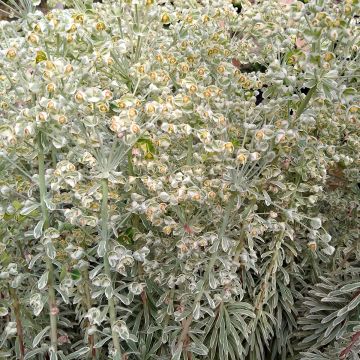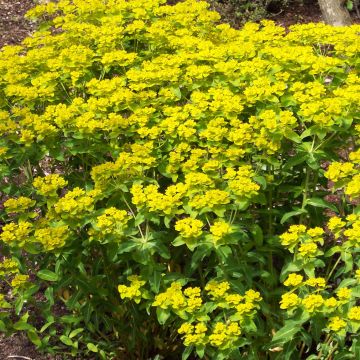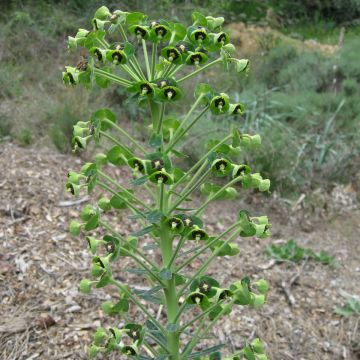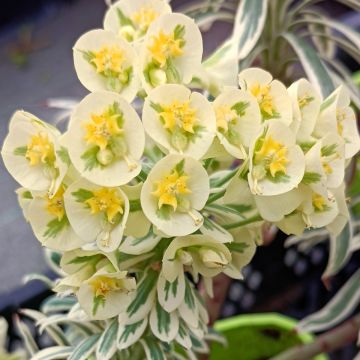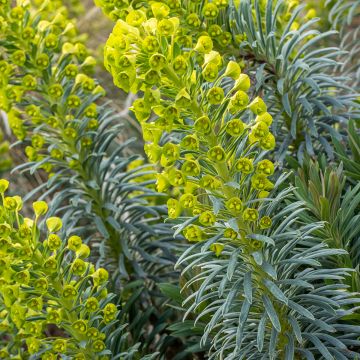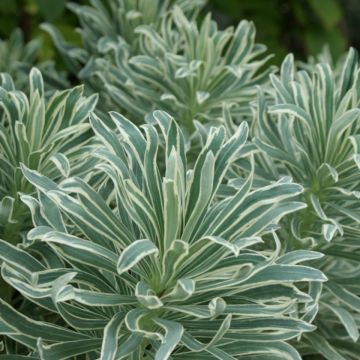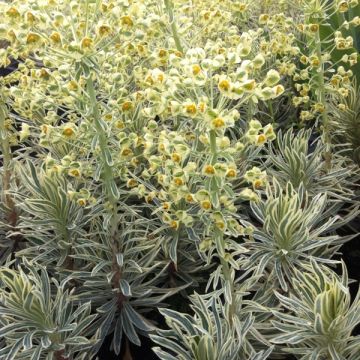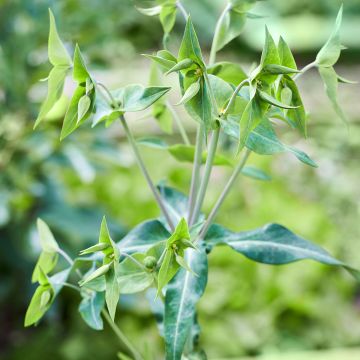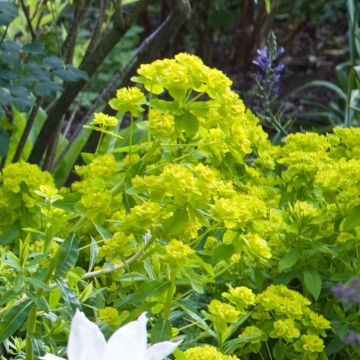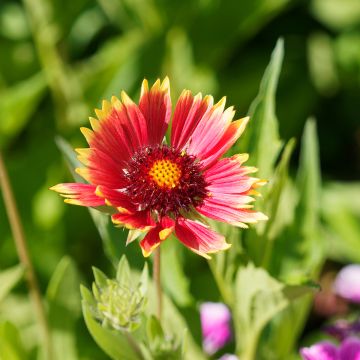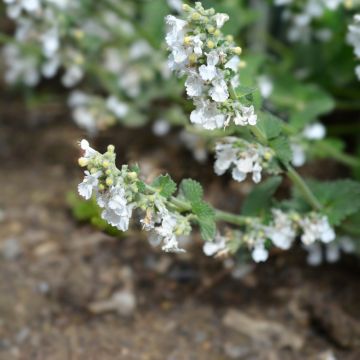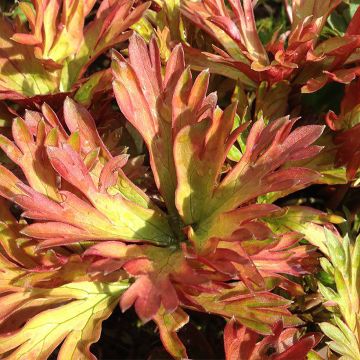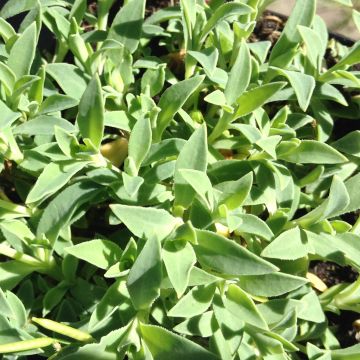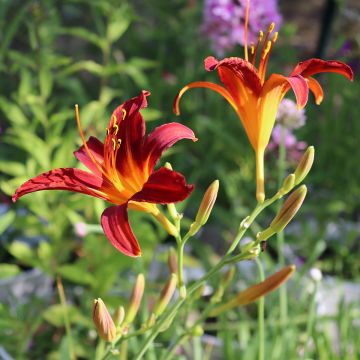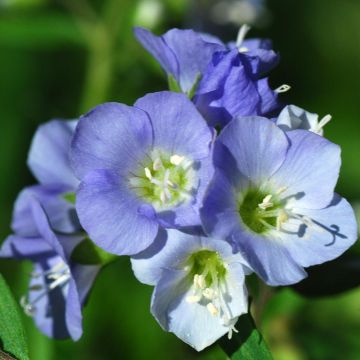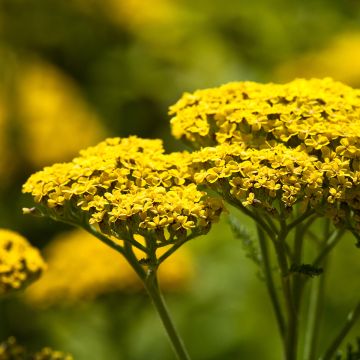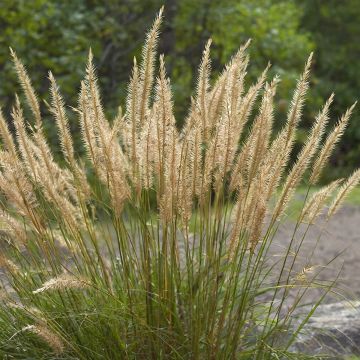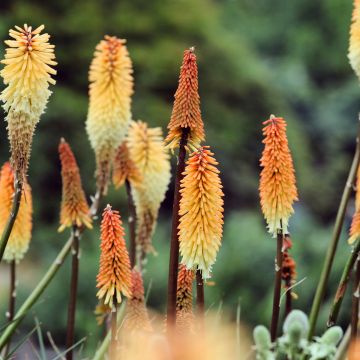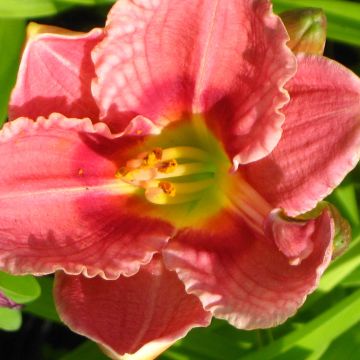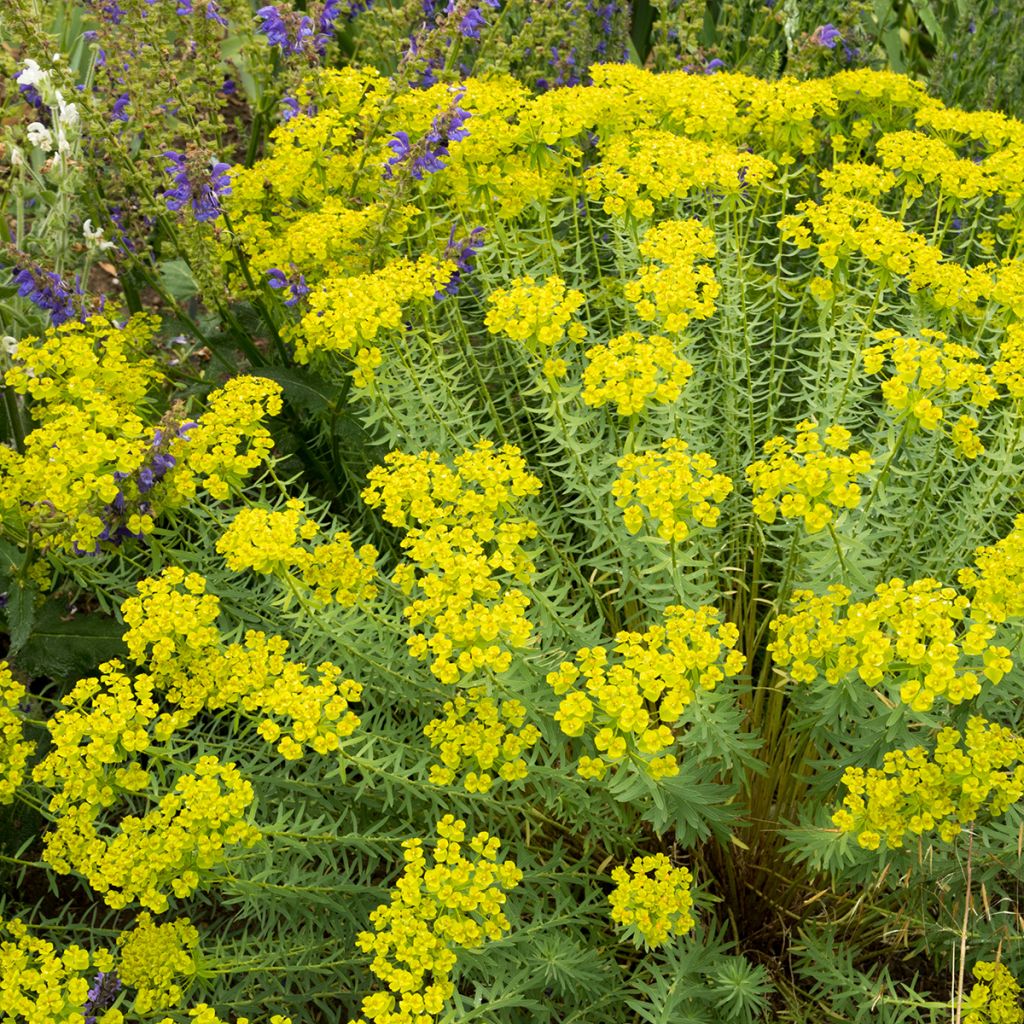

Euphorbia seguieriana subsp. niciciana - Spurge
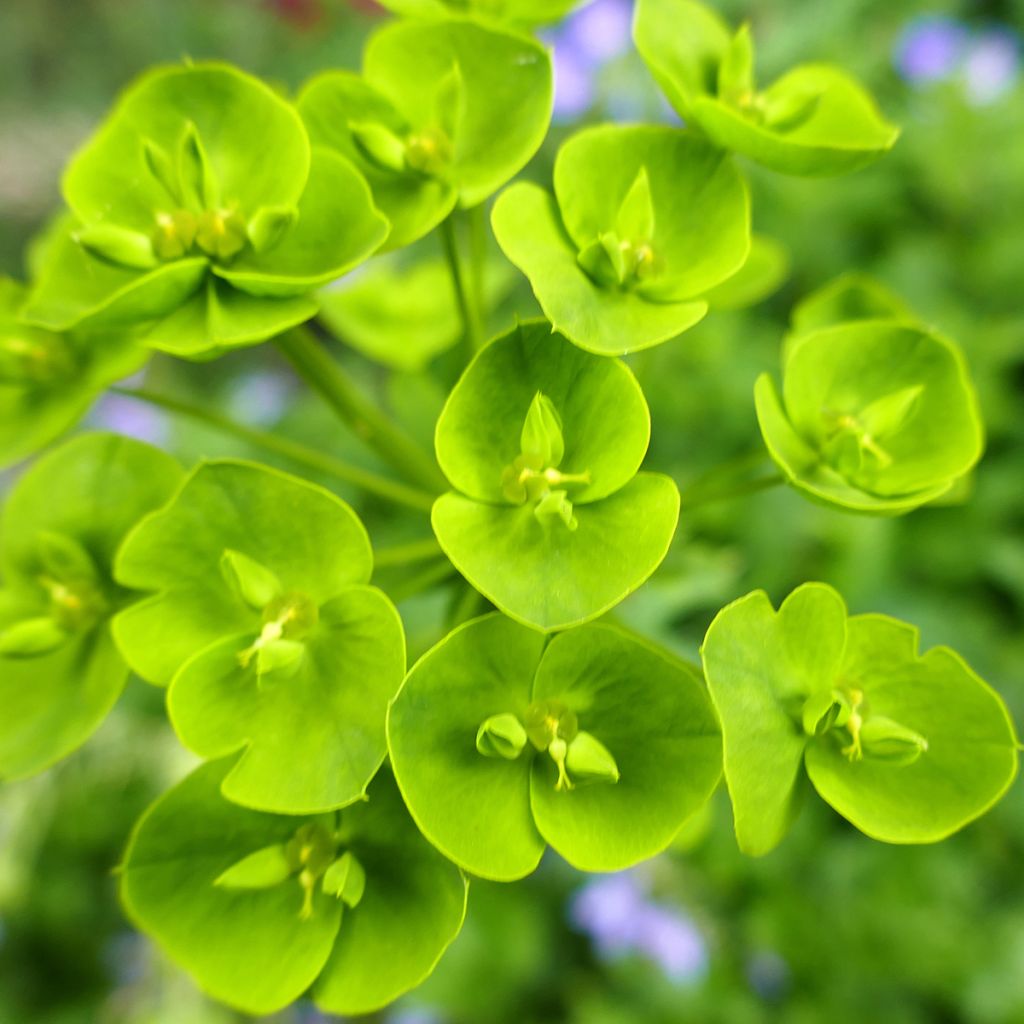

Euphorbia seguieriana subsp. niciciana - Spurge
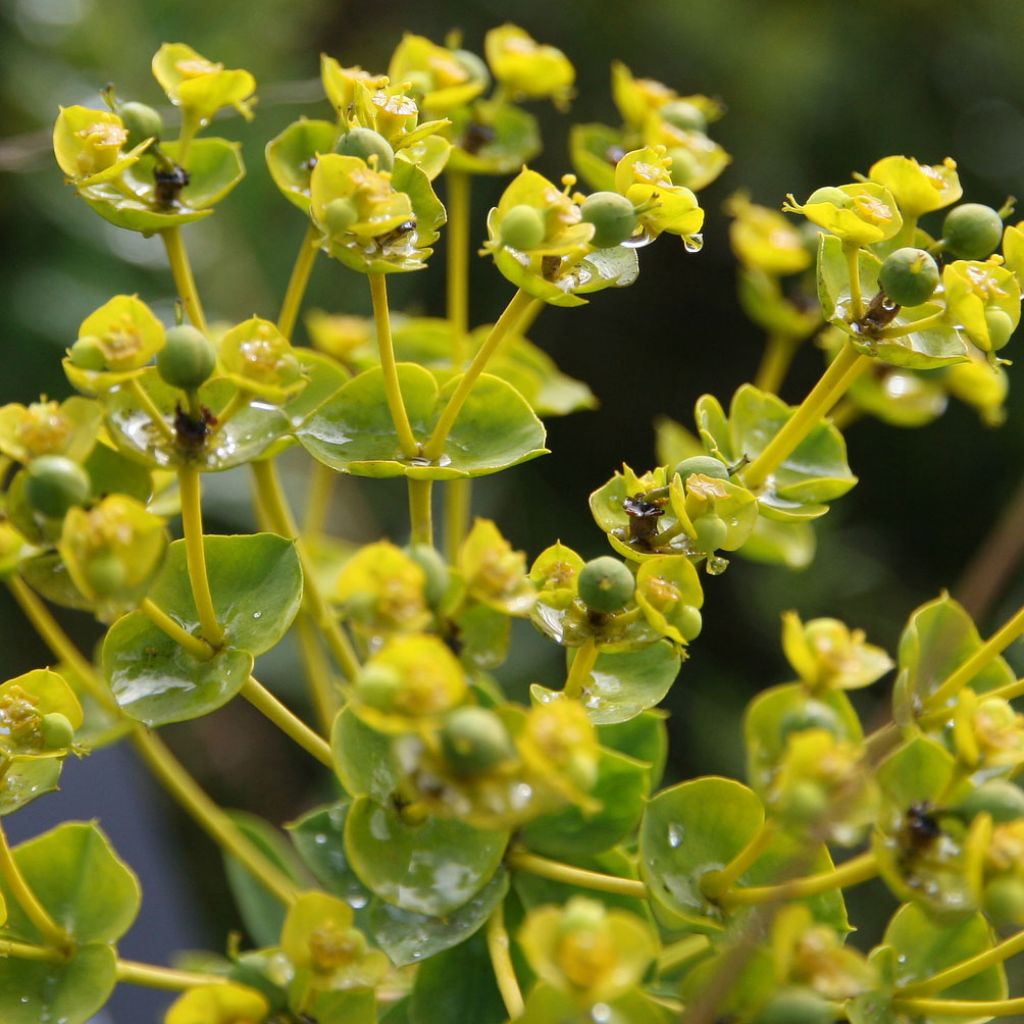

Euphorbia seguieriana subsp. niciciana - Spurge
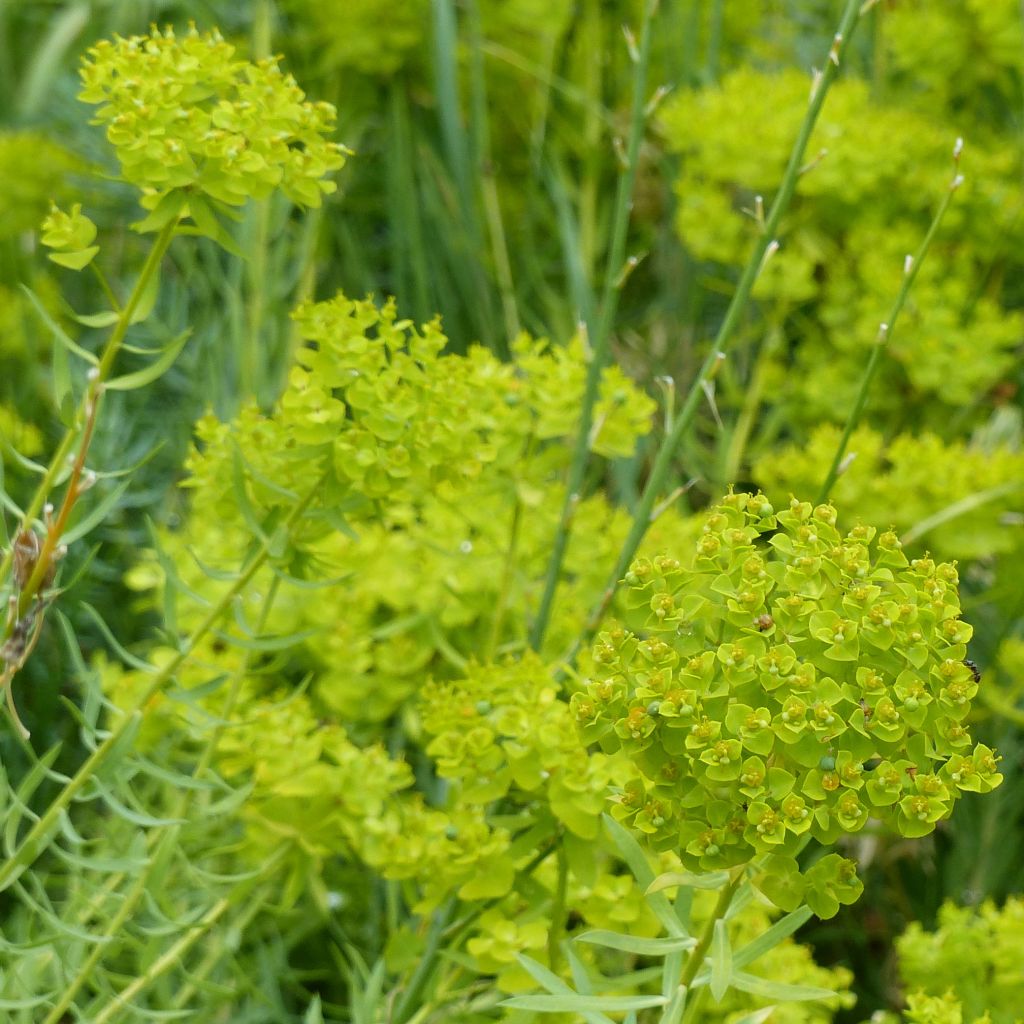

Euphorbia seguieriana subsp. niciciana - Spurge
Euphorbia seguieriana subsp. niciciana - Spurge
Euphorbia seguieriana subsp. niciciana
Nicaea Seguier's spurge
Already a few cm, thank you
Fin février, 25/03/2024
This item cannot be shipped to the selected country
Delivery charge from €5.90
Delivery to Corse prohibited
More information
Schedule delivery date,
and select date in basket
This plant carries a 12 months recovery warranty
More information
We guarantee the quality of our plants for a full growing cycle, and will replace at our expense any plant that fails to recover under normal climatic and planting conditions.
From €5.90 for pickup delivery and €6.90 for home delivery
Express home delivery from €8.90.
Delivery to Corse prohibited: UE law prohibits the import of this plant from mainland France to Corse as part of the fight against Xylella fastidiosa. Please accept our sincere apologies.
More information

Does this plant fit my garden?
Set up your Plantfit profile →
Description
The Euphorbia is a small perennial evergreen and very hardy plant of dry terrain, perfect for rock gardens and waterless gardens. It forms several thin, more or less prostrate stems covered with delicate, fleshy, green-blue-silver leaves. At the end of these stems, a abundant flowering of lime green bracts with an acidic green hue unfolds throughout the summer. It appreciates the sun and can tolerate any well-drained soil, even rocky, poor, and limestone soils.
The Euphorbia belongs to the family of euphorbiaceae. It is native to the Balkan Peninsula, Turkey, Iran, and Pakistan. It has a slightly prostrate tufted habit, reaching 40 to 50 cm (16 to 20in) in all directions. The stems emerge from a central woody crown. The summer flowering takes place from June to September. Inflorescences in umbels, measuring 8 to 15 cm (3 to 6in) in diameter, composed of naked bracts (without petals), form on the terminal part of the leafy stems. Euphorbias are characterized by a very peculiar "flower" called a cyathium, which only exists in these plants. The flower is reduced to a female part surrounded by small crescents, the male parts. This apparent simplicity does not prevent subtle variations of colors that contribute to the strange charm of euphorbias. The foliage is evergreen to semi-evergreen depending on the climate, composed of linear to elliptical-oblong leaves, with a glaucous green color that varies between blue and silver. Like all euphorbias, this plant produces a sticky latex when broken. This latex can cause skin irritations and is toxic if ingested (all parts of the plant).
Euphorbia is perfectly suited for dry gardens, rock gardens, wild or mineral gardens. Its uniqueness will blend well with yellow, orange, or red kniphofias, phormiums, the blue flowering of forget-me-nots, the large leaves of tetrapanax, and yuccas. It is equally at ease in modern gardens as in a rural atmosphere, it pairs well with anything, enhancing any color with its acidic inflorescences. To make its flowering even brighter, simply pair it with the violet of irises, alliums, or large-flowered clematis. The combination with grasses is particularly successful. Using it can create soft and sinuous mass effects, structure flower beds, contrast colors, and shapes of foliage.
Report an error about the product description
Euphorbia seguieriana subsp. niciciana - Spurge in pictures
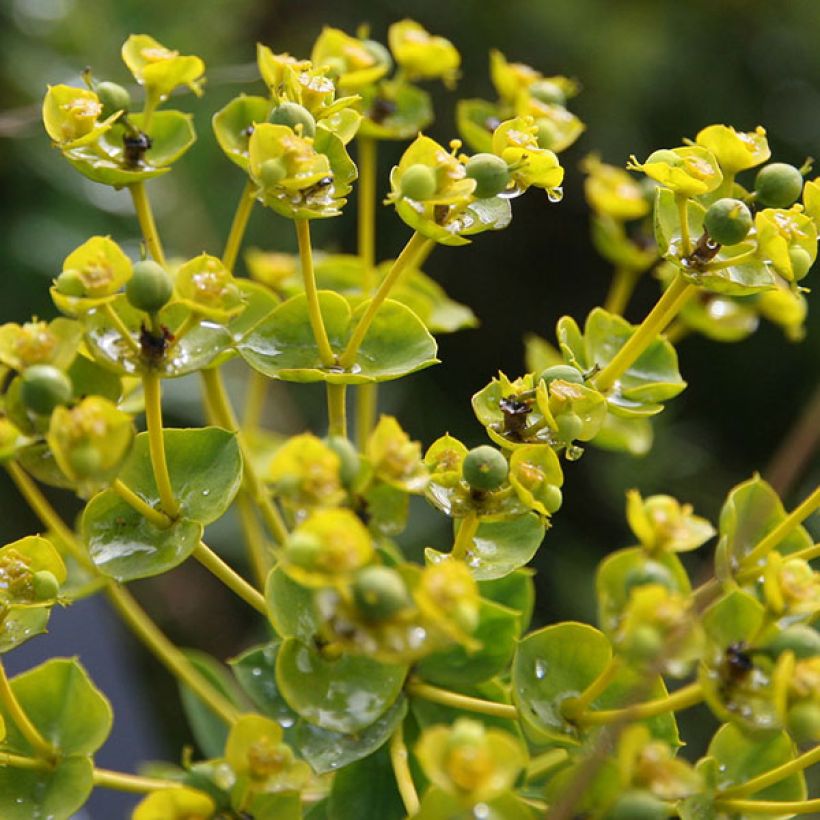

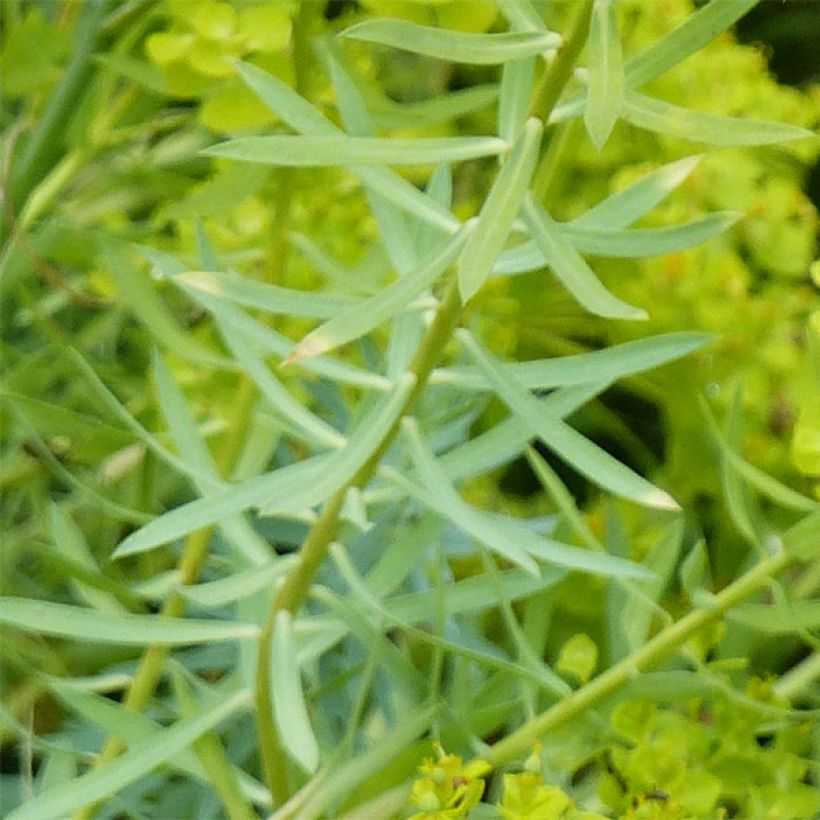

Flowering
Foliage
Plant habit
Safety measures
Botanical data
Euphorbia
seguieriana subsp. niciciana
Euphorbiaceae
Nicaea Seguier's spurge
Central Europe
atteintescutaneomuqueuses
Cette plante peut provoquer l'apparition de réactions cutanées indésirables, une atteinte des yeux, ou des difficultés respiratoires si elle est ingérée.
Ne la plantez pas là où de jeunes enfants peuvent évoluer. Evitez tout contact avec la peau: privilégiez l'emploi de gants pour la manipuler. En cas de contact, lavez-vous soigneusement les mains et rincez abondamment à l'eau la zone concernée. Lavez les vêtements entrés en contact. En cas de réaction cutanée, contactez votre médecin ou le centre antipoison le plus proche de chez vous. En cas d'atteinte étendue ou de difficultés respiratoires, appelez immédiatement le 15 ou le 112.Pensez à conserver l'étiquette de la plante, à la photographier ou à noter son nom, afin de faciliter le travail des professionnels de santé.
Davantage d'informations sur https://plantes-risque.info
Other Euphorbia - Spurge
Planting and care
The Euphorbia seguieriana niciciana grows easily in any well-drained soil, preferably in the sun. The limestone is not important. The ideal substrate should be stony, sandy, and porous. Plant early in autumn or spring. This young plant remarkably tolerates drought and cold temperatures.
Planting period
Intended location
Care
-
, onOrder confirmed
Reply from on Promesse de fleurs
Summer flowering perennials
Haven't found what you were looking for?
Hardiness is the lowest winter temperature a plant can endure without suffering serious damage or even dying. However, hardiness is affected by location (a sheltered area, such as a patio), protection (winter cover) and soil type (hardiness is improved by well-drained soil).

Photo Sharing Terms & Conditions
In order to encourage gardeners to interact and share their experiences, Promesse de fleurs offers various media enabling content to be uploaded onto its Site - in particular via the ‘Photo sharing’ module.
The User agrees to refrain from:
- Posting any content that is illegal, prejudicial, insulting, racist, inciteful to hatred, revisionist, contrary to public decency, that infringes on privacy or on the privacy rights of third parties, in particular the publicity rights of persons and goods, intellectual property rights, or the right to privacy.
- Submitting content on behalf of a third party;
- Impersonate the identity of a third party and/or publish any personal information about a third party;
In general, the User undertakes to refrain from any unethical behaviour.
All Content (in particular text, comments, files, images, photos, videos, creative works, etc.), which may be subject to property or intellectual property rights, image or other private rights, shall remain the property of the User, subject to the limited rights granted by the terms of the licence granted by Promesse de fleurs as stated below. Users are at liberty to publish or not to publish such Content on the Site, notably via the ‘Photo Sharing’ facility, and accept that this Content shall be made public and freely accessible, notably on the Internet.
Users further acknowledge, undertake to have ,and guarantee that they hold all necessary rights and permissions to publish such material on the Site, in particular with regard to the legislation in force pertaining to any privacy, property, intellectual property, image, or contractual rights, or rights of any other nature. By publishing such Content on the Site, Users acknowledge accepting full liability as publishers of the Content within the meaning of the law, and grant Promesse de fleurs, free of charge, an inclusive, worldwide licence for the said Content for the entire duration of its publication, including all reproduction, representation, up/downloading, displaying, performing, transmission, and storage rights.
Users also grant permission for their name to be linked to the Content and accept that this link may not always be made available.
By engaging in posting material, Users consent to their Content becoming automatically accessible on the Internet, in particular on other sites and/or blogs and/or web pages of the Promesse de fleurs site, including in particular social pages and the Promesse de fleurs catalogue.
Users may secure the removal of entrusted content free of charge by issuing a simple request via our contact form.
The flowering period indicated on our website applies to countries and regions located in USDA zone 8 (France, the United Kingdom, Ireland, the Netherlands, etc.)
It will vary according to where you live:
- In zones 9 to 10 (Italy, Spain, Greece, etc.), flowering will occur about 2 to 4 weeks earlier.
- In zones 6 to 7 (Germany, Poland, Slovenia, and lower mountainous regions), flowering will be delayed by 2 to 3 weeks.
- In zone 5 (Central Europe, Scandinavia), blooming will be delayed by 3 to 5 weeks.
In temperate climates, pruning of spring-flowering shrubs (forsythia, spireas, etc.) should be done just after flowering.
Pruning of summer-flowering shrubs (Indian Lilac, Perovskia, etc.) can be done in winter or spring.
In cold regions as well as with frost-sensitive plants, avoid pruning too early when severe frosts may still occur.
The planting period indicated on our website applies to countries and regions located in USDA zone 8 (France, United Kingdom, Ireland, Netherlands).
It will vary according to where you live:
- In Mediterranean zones (Marseille, Madrid, Milan, etc.), autumn and winter are the best planting periods.
- In continental zones (Strasbourg, Munich, Vienna, etc.), delay planting by 2 to 3 weeks in spring and bring it forward by 2 to 4 weeks in autumn.
- In mountainous regions (the Alps, Pyrenees, Carpathians, etc.), it is best to plant in late spring (May-June) or late summer (August-September).
The harvesting period indicated on our website applies to countries and regions in USDA zone 8 (France, England, Ireland, the Netherlands).
In colder areas (Scandinavia, Poland, Austria...) fruit and vegetable harvests are likely to be delayed by 3-4 weeks.
In warmer areas (Italy, Spain, Greece, etc.), harvesting will probably take place earlier, depending on weather conditions.
The sowing periods indicated on our website apply to countries and regions within USDA Zone 8 (France, UK, Ireland, Netherlands).
In colder areas (Scandinavia, Poland, Austria...), delay any outdoor sowing by 3-4 weeks, or sow under glass.
In warmer climes (Italy, Spain, Greece, etc.), bring outdoor sowing forward by a few weeks.

































